Six people died in Sacramento’s worst mass shooting a year ago. Has the city really changed?
John Alexander will be standing on the corner of 10th and K Street into the early hours of the morning, bundled against the cold. He has to, he said. He has to be in the same place where his child died a year ago in Sacramento’s deadliest mass shooting.
Johntaya Alexander was just 21, out for a night of music and dancing with her sister. That night, John got the call from his older daughter just after the 2 a.m. shots rang out. He rushed to the scene, but when he arrived, his headstrong girl was already gone.
He stood and stared at the spot on April 3, 2022, and he will be there again, on April 3, 2023, he said, “to continue my daughter’s life.” To remember her. As the city remembers, too, those who were lost.
Johntaya was one of six people who died in the shooting; another 12 people were injured. Last spring, the city quickly started releasing the names of the dead: Yamile Martinez-Andrade, 21, who came up from Selma for the music in the city; “sassy” Melinda Davis, 57, of Sacramento, who often slept in the doorways of businesses on K; Segio Harris, a 38-year-old father of 3 from North Highlands; his cousin, DeVazia Turner, 29, a father of four; and Joshua Hoye-Lucchesi, 32, a father of six visiting from Salinas.
“This morning, our city has a broken heart,” Mayor Darrell Steinberg said at an early news conference while investigators were still trying to make sense of what happened. The tragedy, he said, was “another call to action around investing more in youth and prevention and early intervention for our young people.”
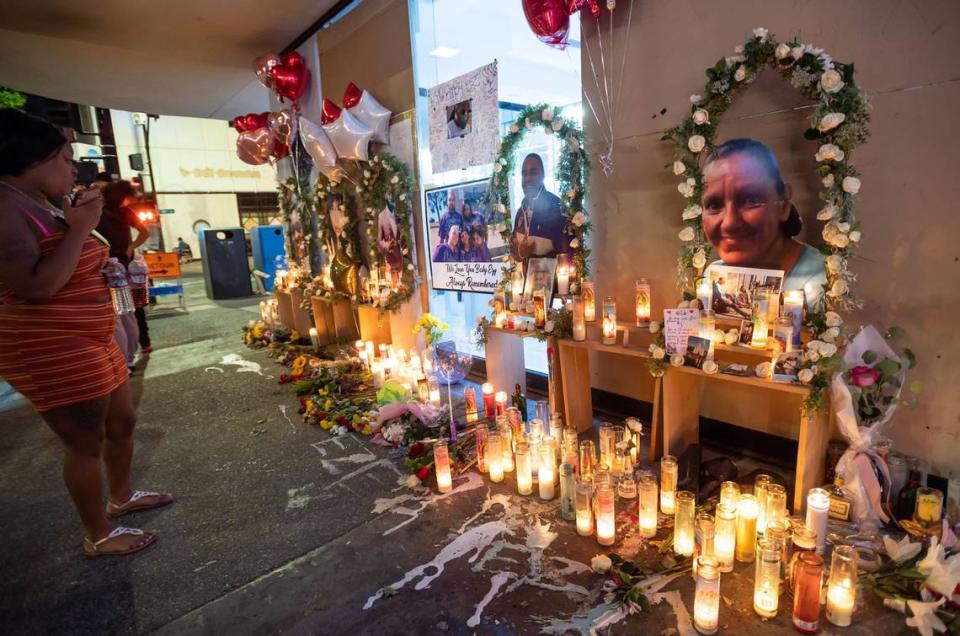
What happened since?
Sacramento Police Chief Kathy Lester placed additional patrol officers downtown on Friday and Saturday nights; officials and local business owners in the Downtown Sacramento Partnership installed some additional lighting.
And, in the months after the deaths, the city invested some money in prevention.
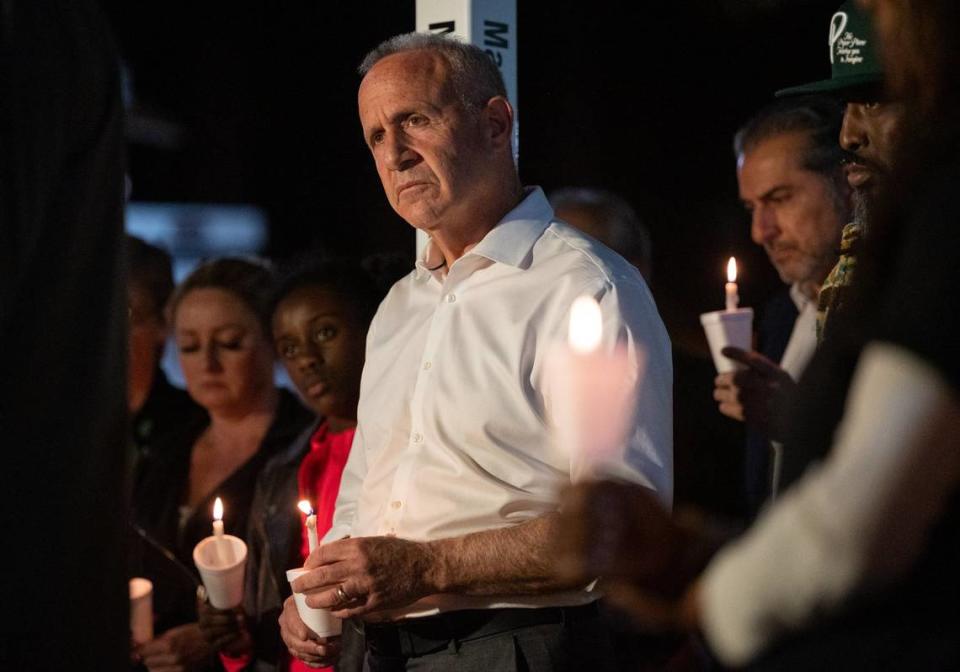
The financial commitments, however, were not for the long-term.
On June 15, 2022, a little more than two months after the shooting, the Sacramento City Council approved a $1.4 billion budget that included $4.5 million for violence prevention programs and $224 million for the police. The police budget had some line items for stopping crime before it actually happens: The Office of Violence Prevention, which now operates under the umbrella of the Sacramento Police Department, would have two staffers and $2.5 million.
Intervention programs Brother 2 Brother Mentoring and La Familia Counseling Center received $10,000 each in the police budget, while Another Choice, Another Change got $35,000.
By October 2022, KCRA reported that the city had finalized contracts with eight organizations that would collectively receive $900,000 from the federal American Rescue Plan Act. Of the total, $249,000 went to Brother to Brother and $200,000 went to Voice of the Youth.
The leaders of those projects — two men who rushed to K Street just after the April 3 shooting to support the survivors and grieving families — were unimpressed.
“I know when people are truly making a fundamental investment: That means that out of that shooting, there would have been an orchestrated plan that would have had years on it, and there would have been no break,” said Berry Accius, the founder of Voice of the Youth. “A couple hundred thousand dollars for a year, and then ‘we’ll check to see the next year’ ain’t gonna work.”
For her part, Lester was convinced working with community groups in the aftermath of the shooting helped quell any retaliation. Mervin Brookins, the founder of Brother 2 Brother, said he sat with young men and “played the tape forward,” helping them process their anger and grief while keeping their eyes on the future.
But as a budget crunch looms and the city gears up to set its funding priorities for the coming year, City Councilwoman Katie Valenzuela fears a return to the status quo that led to bloodshed in the first place.
“Every time we give those (intervention) groups money, it’s one-time, and the shootings go away, and so the sense of urgency lessens, and then the next budget cycle, they don’t get funded, and then the shootings come back,” said Valenzuela, the City Council representative for District 4, where the K Street shooting occurred.
She referenced the city’s abandonment of another promising, cost-effective violence prevention program. Advance Peace, a UC Berkeley evaluation found, reduced gun violence and assaults by 22% across three targeted neighborhoods, in an 18-month period when the city’s overall numbers went down by only 10%. In Del Paso Heights specifically, the number of gun violence and assault incidents decreased 39%.
But in 2021, the city didn’t renew the program’s contract. Valenzuela said, “It’s this really perverse cycle that it feels like we’re stuck in.”
Six deaths among dozens
The six people who died on K Street that night joined a grim tally: All told, the city saw 54 homicide deaths in 2022. The number was just four fewer than 2021, the deadliest year in Sacramento since 2006.
But these K Street deaths stood out.
Lester said violence happens throughout the city every day, and it can become background noise. Crime often doesn’t resonate much among people when it doesn’t directly affect them, she said, but the April 3 shooting was different, largely because of the location.
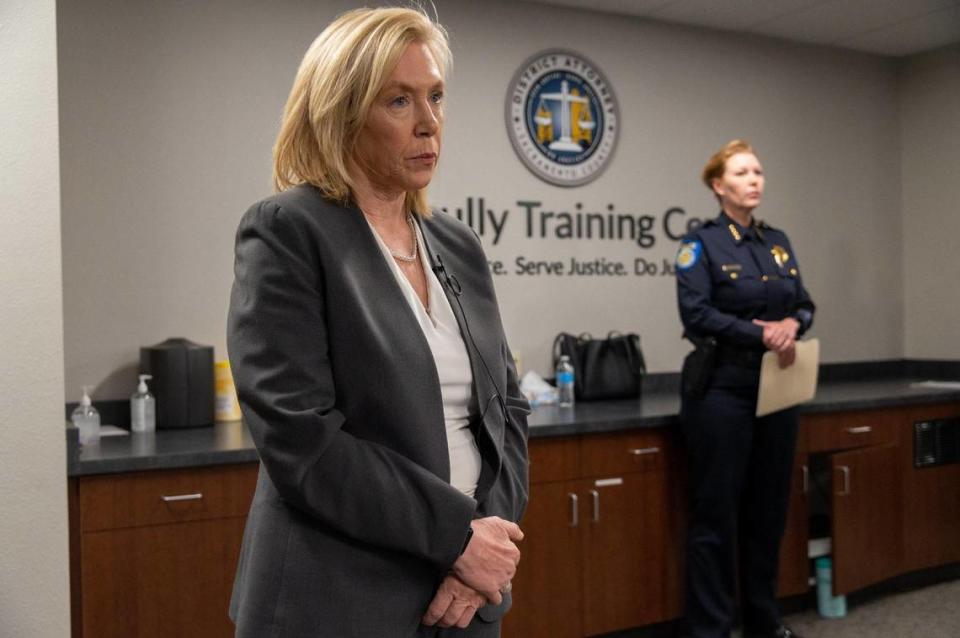
“Not just for people that worked or lived downtown,” Lester said, “but that it could happen anywhere.”
Accius agreed with Lester.
“Our pinnacle of the city is downtown,” he said. “Our tourist attraction is our downtown. What we’ve known in our city, what we’re trying to cultivate, is the downtown area. So it’s very precious. So for that to happen there, it was kind of a ‘wow’ moment.”
Violence from impoverished neighborhoods, Accius said, had spilled into a more affluent neighborhood, to the shock of some people in the city. At first, it was a galvanizing moment.
But some onlookers believed that elements of the crime put a damper on that initial public support.
Stevante Clark, the anti-violence advocate whose brother, Stephon Clark, was shot and killed by police in his grandmother’s Meadowview yard in 2018, said he noticed the shift as soon as police started saying that the shooting might have been connected to gangs.
“They found out that these former or active gang members were involved in some sort, then I feel like then people kind of disengaged with the story,” Clark said. “And I feel like they stopped looking at it as if these were human beings.”
To a certain degree, that was reflected in the criminal case against the suspects.
Police had ample evidence, including more than 200 videos and photos that members of the public submitted through an online portal. Three men were quickly arrested and charged with the killings: Dandrae and Smiley Martin, 26 and 27, and Mtula Payton, 27, who remain in custody and are scheduled to return to Sacramento Superior Court for a hearing June 2.
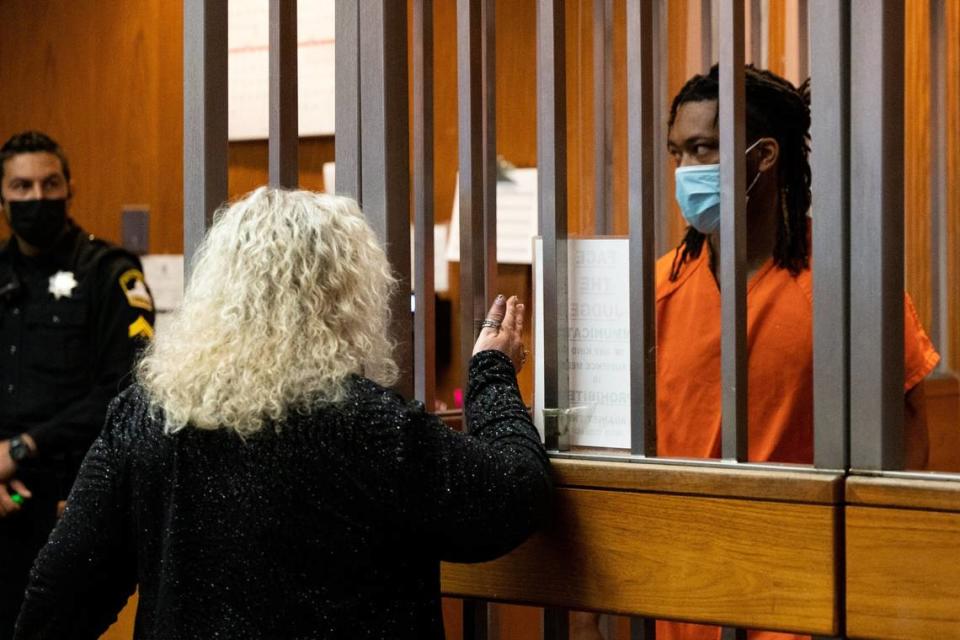
But the suspects were only charged with killing three people — Martinez, Davis and Alexander. The men who had been killed, police said, had gang affiliations. Court documents showed there was evidence they were involved in the gunfight.
That narrative, said Empact founder Leia Schenk, was incredibly painful, and had material repercussions for the families. She recalled that the day of the shooting, Steinberg said at a news conference, “We will do everything we can to support the families, of course.”
“When it came down to it,” Schenk said, “the families didn’t hear from him, and he wasn’t responsive to them at all.”
In the days after the shooting, the mayor’s office coordinated with the county district attorney’s office and its Family Assistance Center, which offered crisis counseling. The mayor’s office also directed victims’ families to meet with the district attorney to see if they qualified for financial support from the California Victim Compensation Board.
However, to be eligible for that money, the victim in question must not “been involved in events leading up to the crime.” By that standard, neither Sergio Harris nor his family were victims in the eyes of the police.
His first child just turned 12 this year. His two younger children are now 9 and 7 — all growing up without him.
The lack of support for the families of the men who died irks Schenk, whose organization worked with the loved ones of Sergio Harris, DeVazia Turner and Johntaya Alexander.
“It means essentially to the families, the way it translates is that their lives didn’t matter, that if we can consider this gang-related, then, hey, then we could throw our hands up,” Schenk said. “People walk away and say, ‘Hey, well, that’s kind of what happens when you’re gang-affiliated.’”
Harris’ mother, Pamela Harris, declined to speak on the record for this story, except to say, “There’s not a day that goes by that we don’t think about him.”
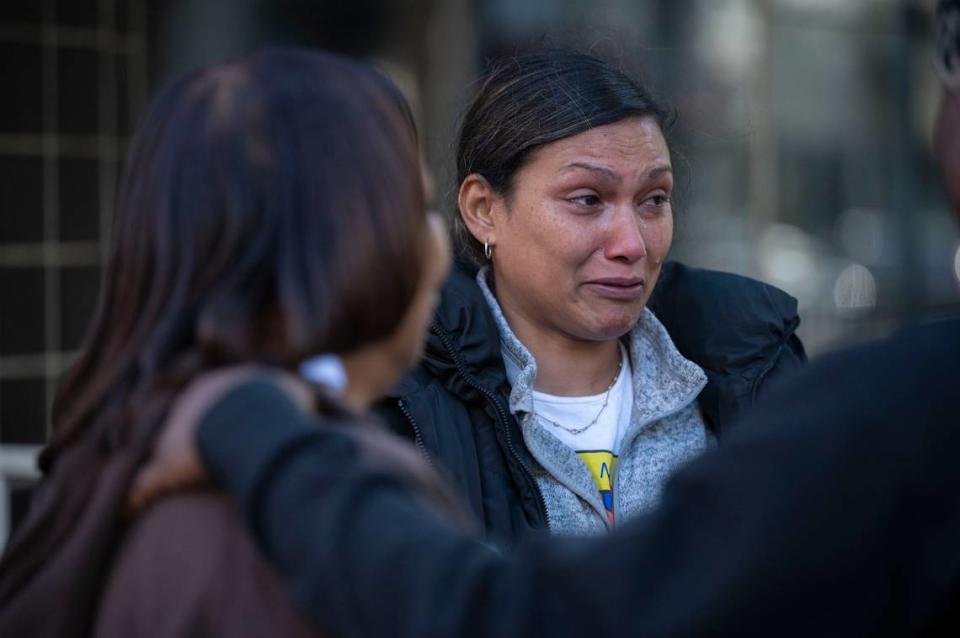
Two more deadly shootings in downtown and midtown
Lester called last year’s K Street shooting “an anomaly.” But after April 3 last year, two more deadly late-night shootings took place outside bars and nightclubs in Sacramento’s downtown and midtown neighborhoods.
No suspects have been arrested or identified in connection with the July 4 shooting outside Mix Downtown nightclub at 16th and L Streets, which left Greg Najee Grimes dead and four others wounded just before 2 a.m.
Grimes was a 31-year-old father of one. He was a former football player at Boise State University. He returned to coach football and teach at his Sacramento alma mater, Inderkum High School. He’d been out that night celebrating the holiday with friends.
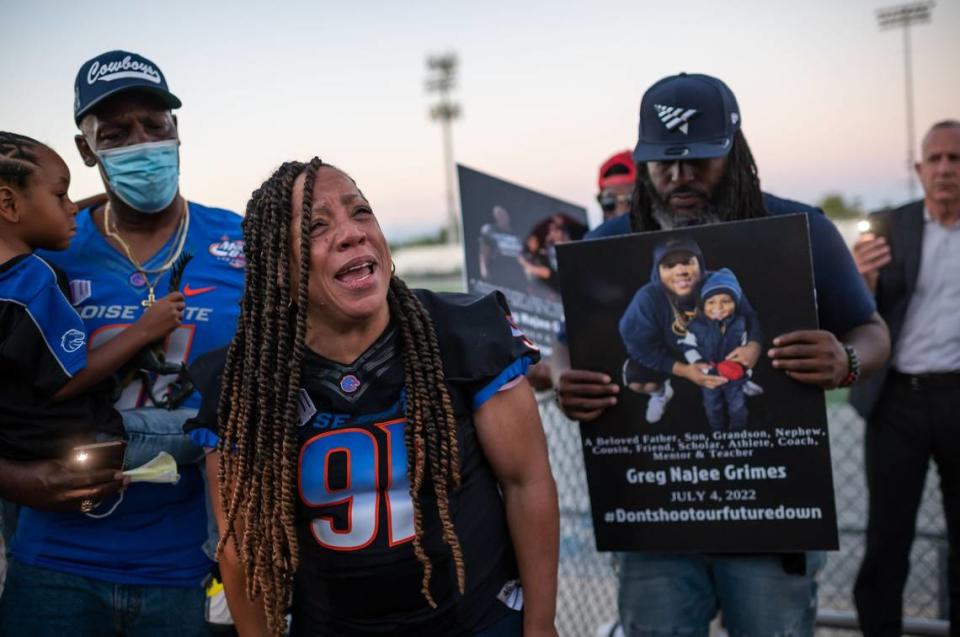
Two months later, on Sept. 25, Alfonso Martinez Jr., 34, of Elk Grove, was shot and killed near the intersection of J Street and 28th Street around 12:45 a.m. A shootout between two people occurred shortly after BarWest staff ejected a group from the business. The next day, police arrested Michael Escobar.
Investigators determined that at least one of the people involved in the shooting had been kicked out of the bar before retrieving a gun.
Over the next three days in September, three more shootings left four more people dead. Investigators did not believe these shootings were directly linked, though they were clearly part of a regional pattern.
Still, crime statistics from the Sacramento Police Department show gun violence took a slight dip in 2022. There were 725 shootings reported last year in Sacramento, 3.6% less than the 752 reported in 2021, according to police data. In 2022, 175 people were either killed or wounded by gunfire in the city; 256 people were killed or injured by gunfire in 2021.
Even though the shooting statistics and the number of homicides are heading in the right direction, Lester said gun violence remains a strong concern for her department.
“That’s still way too many people getting shot in the city,” the police chief said. “There’s way too many bullets that are flying. We can’t forget 10th and K, and we can’t forget the gun violence that happens in a lot of communities.”
The shooting statistics in the first two months this year are also trending down. Through February, police data shows 96 shootings were reported in Sacramento, a decrease from the 135 reported in the first two months last year. In the same two months, 15 people were killed or wounded by gunfire — 50% less than the 30 shooting victims in January and February last year.
Those numbers still represent lost and damaged lives, but most of the city moves on. The survivors, however, can’t.
Pamela Harris will be on K Street at 6 p.m. on April 3, marking the year anniversary of Sergio’s death alongside other victims’ families.
Much earlier in the day, John Alexander will be on that street corner, too — until 2 in the morning, keeping watch. Imagining a world where Johntaya is safe, and turning 23.

